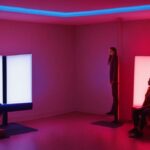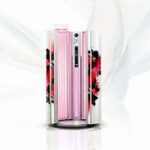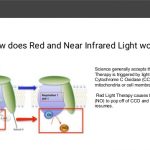Light therapy, also known as phototherapy, is a popular treatment option for various health conditions such as seasonal affective disorder, acne, and sleep disorders. Often, individuals wonder how quickly they can expect to see results from light therapy. In this discussion, we will explore the timing of the effects of light therapy and what factors may influence its effectiveness.
Contents
Understanding Light Therapy
Light therapy, also known as phototherapy, is a non-invasive treatment that uses specific wavelengths of light to treat various conditions, including depression, sleep disorders, and skin problems. Light therapy is thought to work by stimulating the body’s natural healing processes and regulating the production of melatonin, a hormone that plays a crucial role in sleep regulation.
How Does Light Therapy Work?
Light therapy works by exposing the body to bright light, typically from a lightbox or lamp, for a specific amount of time each day. The light is usually blue or white and has a brightness of 10,000 lux or higher.
When the light enters the eyes, it stimulates the retinal cells, which then send signals to the brain’s suprachiasmatic nucleus. This part of the brain is responsible for regulating the body’s circadian rhythms, including sleep-wake cycles. By stimulating the suprachiasmatic nucleus, light therapy helps to reset the body’s natural clock and improve sleep quality.
Immediate Effects
One of the benefits of light therapy is that it can produce immediate effects. Many people report feeling better after just one session. This is because light therapy can increase serotonin levels in the brain, which can improve mood and energy levels.
Short-Term Effects
In some cases, light therapy can produce short-term effects. For example, people with seasonal affective disorder (SAD) may notice an improvement in their symptoms after just a few days of treatment. Similarly, people with jet lag or shift work sleep disorder may experience relief from their symptoms within a few days of starting light therapy.
Long-Term Effects
For most people, the benefits of light therapy are cumulative and tend to increase over time. Studies have shown that regular light therapy can improve mood, sleep, and cognitive function over the long term. It can also be effective in treating chronic conditions such as depression and bipolar disorder.
Factors That Affect Light Therapy
Duration of Treatment
The duration of light therapy treatment can vary depending on the condition being treated and the individual’s response to the treatment. In general, most people require daily treatments for several weeks to see significant improvements in their symptoms.
Timing of Treatment
The timing of light therapy treatment is also important. Light therapy should be administered in the morning, as exposure to bright light at night can disrupt sleep and have negative effects on mood and energy levels.
Distance from Light Source
The distance from the light source can also affect the effectiveness of light therapy. Most light therapy lamps recommend sitting at a distance of around 12-18 inches from the lamp for maximum effectiveness.
Type of Light Source
Different types of light sources can produce different wavelengths of light, which can affect the effectiveness of light therapy. Full-spectrum light sources, which mimic natural sunlight, are generally considered to be the most effective for light therapy.
FAQs: How Quickly Does Light Therapy Work?
What is light therapy and what are its benefits?
Light therapy is a form of treatment that uses bright lights to help alleviate a variety of physical and mental health conditions. The benefits of light therapy include improving mood, reducing symptoms of depression and anxiety, regulating sleep patterns, and reducing symptoms of seasonal affective disorder (SAD). It is also beneficial for certain skin conditions like psoriasis.
The science behind light therapy is based on the body’s internal clock or circadian rhythm. The light from the therapy lamp helps to reset the body’s clock, which is beneficial for improving sleep and regulating mood. In addition, light therapy is believed to stimulate the production of serotonin and other neurotransmitters in the brain that help to stabilize mood and reduce symptoms of depression.
How long does it take to see results from light therapy?
The length of time it takes to see results from light therapy can vary depending on the individual and the condition being treated. Some people may begin to see improvements in their mood or sleep within a few days of starting light therapy, while others may not see results for several weeks. It’s important to be patient and consistent in using light therapy, as it may take time for the body to adjust and respond to the treatment.
How often and for how long should I use light therapy?
The frequency and duration of light therapy sessions will depend on the specific condition being treated and the intensity of the light used. In general, most people use light therapy for 30 minutes to one hour a day, ideally in the morning. It’s important to follow the recommendations of your healthcare provider and to use the therapy lamp consistently for the best results.
Are there any potential side effects of light therapy?
Some people may experience side effects from light therapy, such as headache, eye strain, or nausea. These side effects are usually mild and temporary and can be reduced by adjusting the intensity of the light or the length of the session. In rare cases, light therapy can trigger manic or hypomanic episodes in people with bipolar disorder, so it’s important to discuss any concerns or questions with your healthcare provider before starting light therapy.


.jpg)




